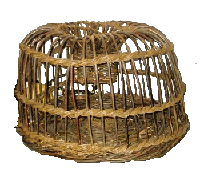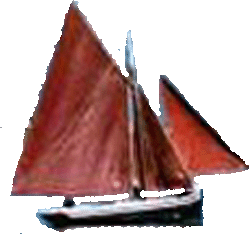|
|
Whiddy Island.Co Cork. |
|
|
Site Home Page | Find Businesses | History | Video | E Postcards | Famous People | Jigsaws Auto Services | Beauty | Bridal Salons | Building Services | Camp Sites | Car Boot Sales | Cruising Holidays | Creches | Diving Holidays | Engineering | Equestrian | Estate Agents | Events | Fairs & Shows | Family Services | Farmers Markets | Fishing || Florists | Fuels | Guest Houses | Hardware | Haulage | Hostels | Hotels | Insurance | Lingerie | Jewelers | Mens Wear | Museums | Music Sessions | Pet Services | Photographers | Self Catering | Taxi | Travel Agents | Vintage | Wedding Transport |
| Whiddy
Island is situated in Bantry Bay it is about three miles Today the population of Whiddy Island stands
at about 30, around the 1880's Widdy Island supported a population of
around 450. In 1918 the modern world arrived in Whiddy Island on a grand
scale when the Whiddy Island offer the tourist an opportunity to enjoy the scenic beauty and tranquility of Irelands Southwest, where the hectic pace of modern life seems so far away. You could stay in one of the many excellent guest houses where you will be considered almost a family member, or take a day trip to see the sites, do some bird watching, fishing in one of the islands two lakes or explore the monastic ruins on the island. The text below is taken from Samuel Lewis Topographical Direcrory of Ireland 1837 WHIDDY ISLAND, in the parish of KILMACOMOGUE, barony of BANTRY, county of CORK, and province of MUNSTER, 1 3/4 mile (W.) from Bantry; containing 714 inhabitants. It is situated near the inner extremity of the bay of Bantry, and extends from N. E. to S. W. nearly three miles, having an average breadth of about one mile, and comprising 1218 statute acres of excellent land, chiefly under an improved system of cultivation. It is remarkable for the variety of its soil, which in some places consists of a rich loam, and in others of rock, sand, and stiff clay: on the north side are extensive rocks of a black shaly substance, soft and unctuous, and much resembling black lead: it is called Lapis Hibernicus, and was formerly given medicinally in cases of inward bruises, but is now chiefly used by carpenters as black chalk. There are both a fresh and a salt water lake on the island. Three batteries, each consisting of a circular tower surrounded by a deep fosse, and together mounting 18 guns, were built subsequently to the descent of the French fleet here in 1796: there were barracks for seven officers and 188 non-commissioned officers and men of the engineer and artillery departments, but the whole are now entrusted to the care of one man. Along the eastern shore of the island are five small islets, between which and the mainland on the east is the best anchorage in the bay, in five or six fathoms, quite landlocked, and secure from all winds. On an eminence near the eastern point of the island are the ruins of a castle, built by O'Sullivan Bear in the reign of Hen. VI. In the reign of Queen Elizabeth it was in the possession of Sir George Carew, Lord-President of Munster, and it was ultimately destroyed by Ireton during the civil war of the 17th century. There are also some vestiges of an ancient church, with a cemetery attached. The island forms part of the estate of the Earl of Bantry. Read about County Cork in 1837. |
||
Read
about Widdy Island from
Samuel Lewis |
|
Whiddy Island Cork Kerry Tourism |
Whiddy Island has a large oil terminal in 1979 an explosion on a French oil tanker the Bettlegeuse killed 50 people some of them locals working in the terminal. Go to Irish Islands home page. Home | Other Islands | History | Co Cork |

 long and one wide,
a short 10 to 15 minute ferry trip from Bantry town will take you to
an island bathed by the gulf stream Whiddy Island and all of Ireland's
southwest coast enjoy a mild climate, producing a wealth of wildlife
and a unique ecology. Whiddy Island is host to one of the few insect
eating plants in Ireland the common Butterwort plant, red and purple
fuchsia grow in profusion on the island.
long and one wide,
a short 10 to 15 minute ferry trip from Bantry town will take you to
an island bathed by the gulf stream Whiddy Island and all of Ireland's
southwest coast enjoy a mild climate, producing a wealth of wildlife
and a unique ecology. Whiddy Island is host to one of the few insect
eating plants in Ireland the common Butterwort plant, red and purple
fuchsia grow in profusion on the island. US Navy's Air Wing
established a seaplane base at the eastern end of Whiddy Island, the
first planes arrived on 25th September 1918, their job was to patrol
the area around the Fastnet Rock. The largest plane in the group was
the H16 built by Curtiss, at Buffalo, New York. the H16 was 45 ft long
with a wingspan of 95ft, propelled by two 400hp engines. Can't you imagine
the conversation around the firesides and in the pubs after witnessing
one of those monstrous machines.
US Navy's Air Wing
established a seaplane base at the eastern end of Whiddy Island, the
first planes arrived on 25th September 1918, their job was to patrol
the area around the Fastnet Rock. The largest plane in the group was
the H16 built by Curtiss, at Buffalo, New York. the H16 was 45 ft long
with a wingspan of 95ft, propelled by two 400hp engines. Can't you imagine
the conversation around the firesides and in the pubs after witnessing
one of those monstrous machines.